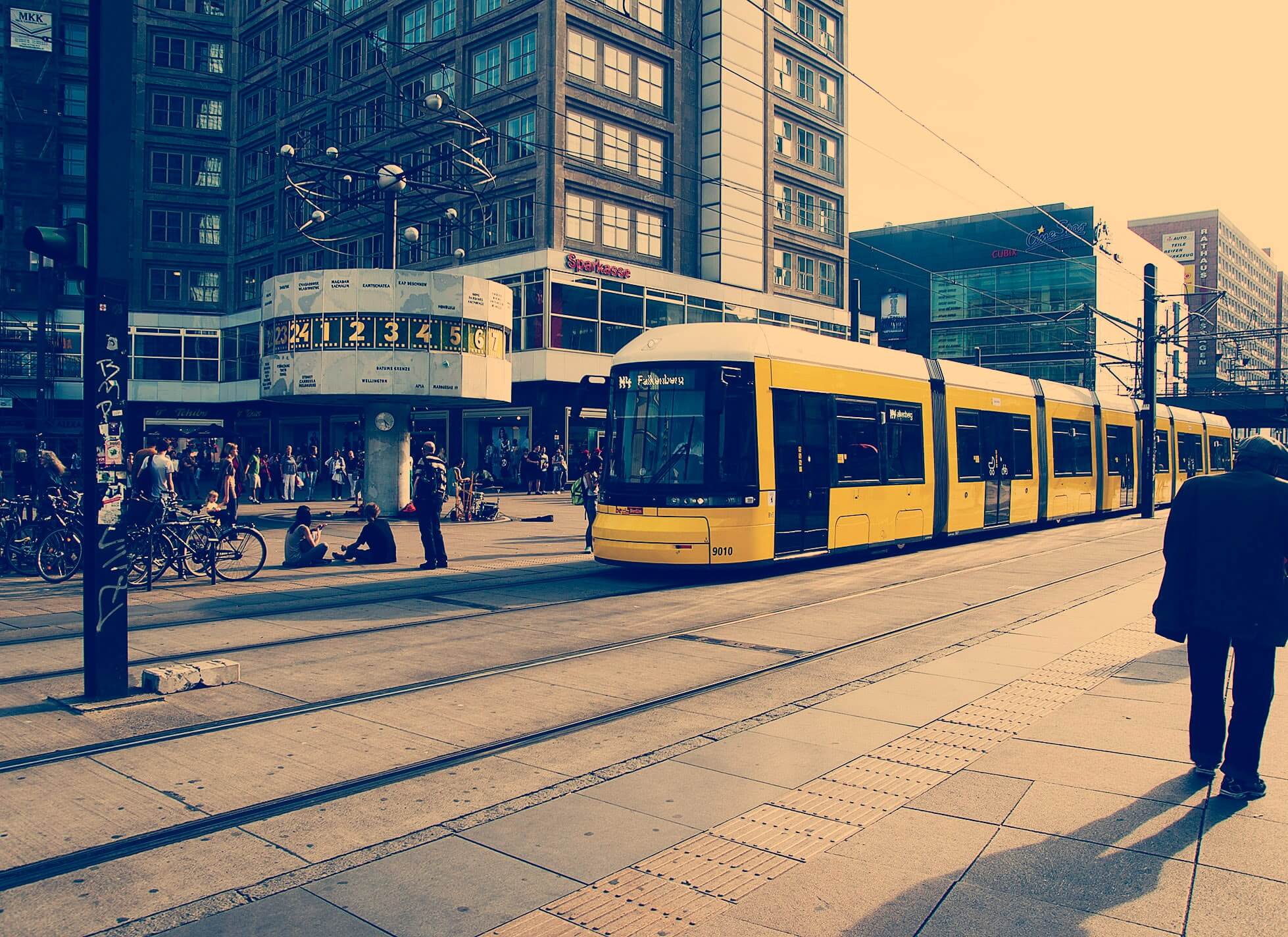
Germany is formally known as the Federal Republic of Germany is a country located in Central Europe. The currency used here are Euros and the languages spoken here predominantly are German, Dutch and English. Germany is also the second most popular country in Europe after Russia. This country has breathtaking landscapes, dense forests, beautiful rivers, mountain ranges for trekking and some beaches on its Northern side. There are around eighty cities in Germany and Berlin is the capital of this country. This country is famous for its history, colourful architecture, delicious food and beer. It is one of the top destinations for travelling.
Berlin :
Berlin is the capital of Germany which is located in western Europe and this city holds the biggest historical event which is the Holocaust. Graffiti on Berlin walls, Brandenburg gates, Holocaust memorial are some of the important places here. The population here is 36.4 lakhs. This place is also famous for its museums such as Dahlem Museum, New National Gallery, Egyptian museums and others. Berlin is also the cheapest capital city in western Europe. The median household income here is $58,988. German is the official language spoken here. The cons in this city are that the taxes are high and finding a job is hard. The pros are that everyone can live on a budget here and public transport is efficient. The monthly cost of living for a single person is $920. Some of the Universities present here are Humboldt University, Berlin Institute of Technology and others.
Hamburg :
Hamburg is located in northern Germany in the Jutland Peninsula and it is the second largest city there. This place has some of the best coffee shops and has the third largest port in Europe and a festival called Hafengeburtstag is celebrated for it. This place has an amazing night life and it is known for its cultural and commercial significance. The population here is 18.4 lakhs and the average median income per family is $85,208. The language spoken here is Hamburg German. Some of the places to visit here are Miniatur Wunderland, Port of Hamburg, Speicherstadt and more. The cons in this city are that it is expensive and it is cold. The pros are that it is safe and good air quality is available. Some of the popular universities here are the University of Hamburg, HAW Hamburg and more.
Frankfurt :
Frankfurt is one of the most important cities in Germany. It is very international as many people visit and it is the largest financial centre in Europe. It is also the home to the European Central Bank. History says that for centuries several kings and queens were elected here and this place is also famous for its book fair. This city was damaged due to World War two and was later rebuilt. The population here is 7.53 lakhs and the average monthly salary here is €4,050. The language spoken here is standard German. Some of the places to visit here are the Stadel Museum, Main tower, Palmengarten and more.The cons in this city is that the rental costs are high and the pros is that this city is located in the centre of Europe.
Some of the best universities here are Goethe University, Frankfurt school of finance, Frankfurt university of applied sciences and more.
Leipzig :
Leipzig is a vibrant city of arts and culture. This city is the eighth most populous city in Germany. Many famous music composers such as Wagner and Mendelssohn are from here. Old Town Hall is one of the important historical sites here. This city is a paradise for art and it has extensive museums, art galleries and concert halls. Some of the places to visit here are Leipzig’s art museum, zoo, Nikolaikirche and more. The monthly living cost here is $851.
The average monthly salary here is €3,300. The cons in this city are that to enjoy this city you should be an art lover and the pros are that this city has beautiful art and architecture. Some of the universities here are Leipzig University, University of music and theatre and more.
Schwerin :
Schwerin is the capital of Mecklenburg – Vorpommern located in northern Germany. This is a small city and has a thousand year old building which is the house of the state parliament. You can get good seafood in this city. This city is called the “land of Lakes” and it has some of the biggest lakes such as Lake Schwerin where several water sport activities take place. The population here is 95,818 and the median household income is €38,407. The cost of living here is €1,160. Some of the places to visit here are the Schwerin Castle, State museum, gardens, Cathedral and more. The cons in this city are that there are higher tax rates and the language barrier. Pros are that this city has a low cost of living and everyone is disciplined and punctual here. Some of the Universities here are the Baltic College, Touro College and more.
Stuttgart :
Stuttgart is the capital of Baden – Württemberg. This city is located in the southwest of Germany. This city is famous for its high tech industries and some top German companies such as Porsche and Mercedes – Benz are located here. There are a lot of greenspaces, headquarters and museums here. The population here is 6.35 lakhs. The average salary here is €3,820 and the cost of living for a single person is €902. Some of the places to visit here are Mercedes Benz museum, Porsche museum, public libraries,
Schlossgärten, Zoos and more. Some of the universities here are the University of Stuttgart, Stuttgart Technology University, University of Hohenheim and more.
Lubeck :
Lubeck is located in the northern part of Germany and it is known for its Brick Gothic architecture. This city was the mediaeval capital of the Hanseatic League and it is also the home to the UNESCO world heritage sites. The skyline of this city is dominated by the tall churches and it is also one of the most romantic cities in Germany. The population here is 2.17 lakhs. The median household income is €1,557 and the cost of living here is $1,603. Some of the places to visit here are the Sparrenburg, Botanischer Garten, Schuco Arena and more. The cons in this city are that there are less cafes and restaurants. The pros are that there is a good education system and good income level. Some of the universities here are the University of Lubeck, Technical University of Applied Sciences and more.
Essen :
Essen is known for its coal mine industrial complex and this city is located in the west of Germany. There are several museums and this city is known for its production of steel and coal mining. But on its southern side there are several parks and huge landscapes. This city is located between two rivers which are the Rhine Herne Canal and the Ruhr river. The population here is 5.83 lakhs. The median household income per month here is €3,380@ and the monthly cost of living for an individual is €806. The cons in this city are that the public transport does not connect many places and the recycling culture is low. The pros are that this city is green with lots of bike routes. Some of the universities here are the University of Duisburg, FOM University of Applied Sciences and Folkwang University of the Arts
Dortmund :
Dortmund is one of the biggest cities in Germany which is located in North Rhine – Westphalia. This city was bombed heavily and destructed due to World War Two and then later it was rebuilt. This city is known for its famous football team called Borussia Dortmund. This city is formerly known as the Steel city and now it has been developed to a cosmopolitan city. The population here is 5.87 lakhs. The average salary per month here is € 3,680 and the monthly cost of living per person is €889. Some of the cons here are language barrier and weather. The pros are that there are industrial places to explore and football.
Some of the places to visit here are Wander westfalenpark, museums and more. Some of the best universities here are Technical University Dortmund, ISM Academy GmbH and more.
Hannover :
Hannover is one of the largest cities in Germany and it is the capital of Lower Saxony. This city has a laid back lifestyle. This city plays an important role as a commercial centre because of its well known art and music. The best time to visit this city is during the festival of Oktoberfest. The population here is 5.32 lakhs.
The average salary here is €3,740 per month and the cost of living is €853. The cons in this city are that it’s laid back and boring. The pros are that there are large parks and a good transport system. Some of the places to visit here are the Herrenhausen Garden, zoos and museums. Some of the universities here are Leibniz Universität, Medical Hochschule University and more
Munich :
Munich is one of the biggest cities in Germany and it is the capital of Bavaria. This city has several museums and beer halls. During the festival of Oktoberfest this city entirely celebrates it. This city is also a major tourist attraction and German is the language spoken here. The population here is 14.7 lakhs. The average median income is €3,860 per month and the monthly cost of living for a single person is €938. Some of the places to visit are Marienpltatz, English Garden, BMW museum and more. Some of the universities here are Ludwig Maximilian University, Munich university of applied sciences and more.
Wiesbaden :
Wiesbaden is located in the west of Germany and was destroyed heavily during World War two. This city is known as the centre of wine and it is famous for Sekt which is a German champagne. This city has peaceful spas and neoclassical architecture. The population here is 2.78 lakhs. The median household income per year is €50,154 and the cost of living per person is €894. Some of the places to visit here are Die Nerobergbahn, Kurhaus, Kurpark and more. The cons of this city is the language and the pro is that this city is safe to live. Some of the universities here are Rheinman university, college of police and administration, EBS business school and others.
Regensburg :
Regensburg is located in the south of Germany and had a long history with old beautiful building that adorn the city and it is a medival old town. It is a laidback place and population here is 1.53 lakhs. The median income per year here is €48.510 and the cost of living here is $1251. Some of the places to visit here are the cathedral, old stone bridge, old town hall and more. The cons are that this city is small and laidback and the pros are that this city has a lot of beautiful old buildings. Some of the universities are Regensburg University and more.
Potsdam :
The city of Potsdam is the home to a UNESCO world heritage site which is the Schloss Sanssouci castle which is known as the Versailles of Germany. Till the twentieth century many kings and queens lived here and hence this city is filled with history. This city also has Dutch neighborhoods and the Dutch style brick houses. This city is near the border of Berlin. The population here is 1.78 lakhs. The average median income is €46k and the cost of living is $1347. Some of the places to visit here are the palace, parks and museums. The cons in this city are the language barrier and the pros are that it’s a good artistic city to live in. Some of the universities here are the University of Potsdam, university of applied sciences, film university, sports university and more.
Rostock :
This city is located in northern Germany next to the Warnow river. This city is the home to the largest and the oldest university in Europe which is the Rostock university. This city has colourful houses and Gothic brick architecture.
The population here is 2.09 lakhs. The average median income is €36.187 per year and the cost of living here is €797. Some of the places to visit here are the Altar Storm, Lighthouse, City wall and more. The cons in this city are the language barrier and the pro is that there are good universities. Some of the universities here are the University of Rostock, university of music, private Hanson University and more.
These are the top fifteen cities in Germany.










